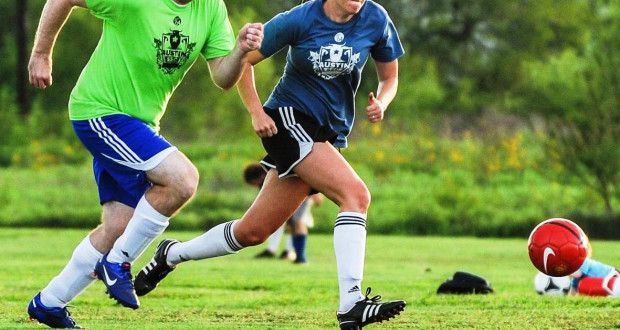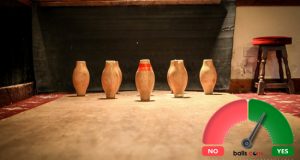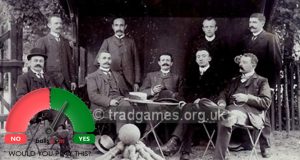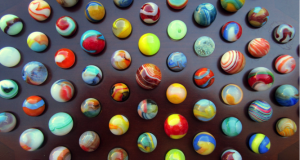Soccer is a sport played between two teams of eleven players with a spherical ball. The game is played on a rectangular field with a goal at each end. The object of the game is to score by getting the ball into the opposing goal. The goalkeepers are the only players allowed to touch the ball with their hands or arms while it is in play and then only in their penalty area. Outfield players mostly use their feet to strike or pass the ball, but may use their head or torso to strike the ball instead. The team that scores the most goals by the end of the match wins. If the score is level at the end of the game, either a draw is declared or the game goes into extra time and/or a penalty shootout depending on the format of the competition.
In soccer games governed by the National Collegiate Athletic Association (NCAA), between three and six identical balls must be furnished by the home team at the beginning of the game or the game cannot begin. Specifications are set for the ball’s circumference, weight and pressure at the beginning of the game; however, the ball is allowed to increase in weight, within an approved range, should it get wet during play.
Rule 2: The Ball
2.1 Dimensions
The circumference of the ball shall not be more than 28 inches nor less than 27 inches. The weight of the ball at the start of the game shall not be more than 16 ounces nor less than 14 ounces, and the weight shall not exceed 16.75 ounces even when wet and used. The pressure of the ball shall be 8.8 to 16.2 psi. Ball pressure shall conform to the manufacturer’s recommendation.
Note: Various manufacturers have different ball pressure requirements printed on the ball.
2.2 Style, Shape and Material
The ball shall be spherical, the outer casing of which shall be leather or approved synthetic, and no material shall be used in its construction that might prove dangerous to players. There are no restrictions on the color of the ball.
Not fewer than five balls, furnished by the home team, shall be available for use in a game, and the balls shall be identical in size, make, grade and color.
PENALTY—The game shall not begin and the referee shall file a report with the governing sports authority. (See Page 7.)
2.3 Defective Ball
In the event the game ball becomes defective, the referee shall suspend play, replace the ball and restart the game by dropping the ball where it was when play was suspended; or, if the ball was inside the goal area, it shall be dropped on that part of the goal area line that runs parallel to the goal line nearest where the ball was when play was suspended. Exception: If the ball is in the goalkeeper’s possession, the game shall be restarted with an indirect free kick by the goalkeeper’s team. (See Rule 9.3.2 and A.R. 9.3.2.a.)
References:
National Collegiate Athletic Association – http://www.msubsports.com/documents/2014/9/30//NCAA_Soccer_Rule_Book_2014_15.pdf?id=891
Photo – austinssc.com/soccer-registration
 Balls.com – Index of Balls used in Sporting Games and Events Sports balls specifications and rules. All levels of organized play.
Balls.com – Index of Balls used in Sporting Games and Events Sports balls specifications and rules. All levels of organized play.






